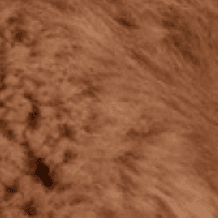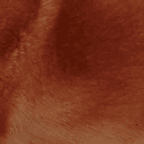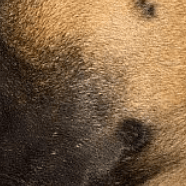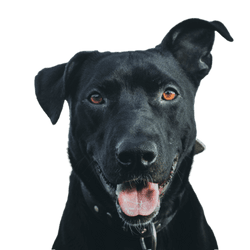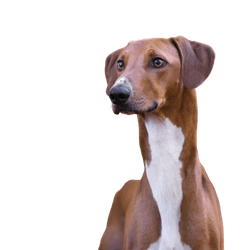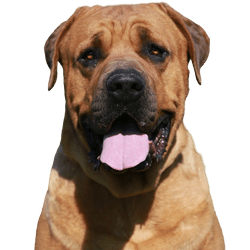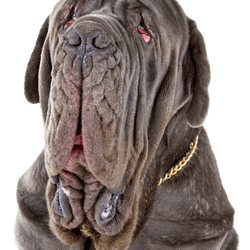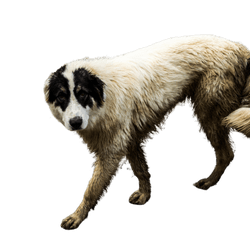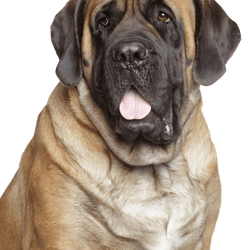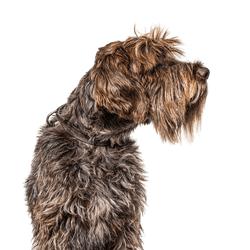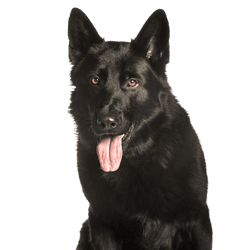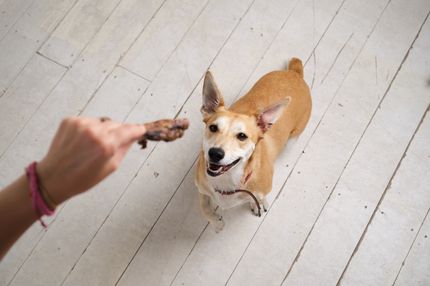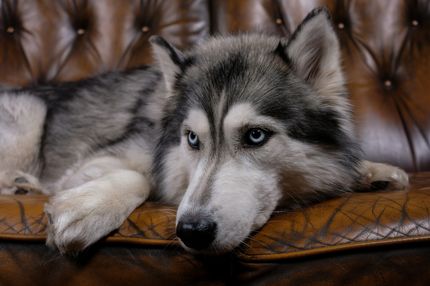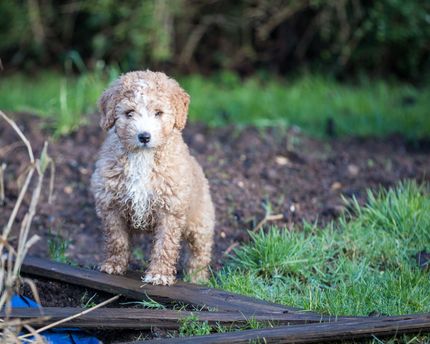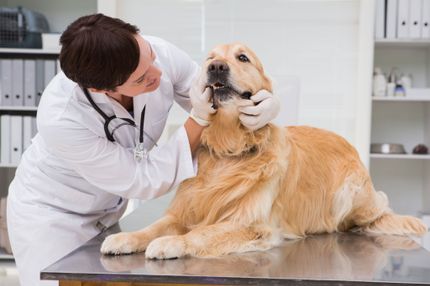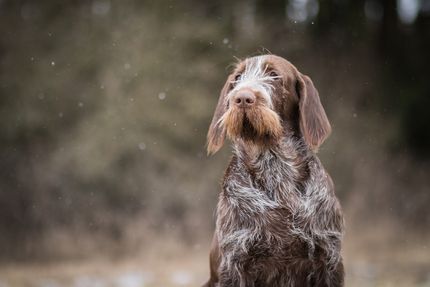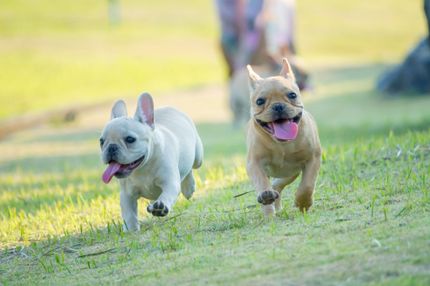Facts & Origin
Origin and history of the Rhodesian Ridgeback
The Rhodesian Ridgeback is very special because it is the only recognized breed originating from southern Africa. By tracing back its ancestors could be found in the Cape Colony, which mixed with pioneer dogs of that time but also semi-domesticated "Hottentot dogs" (native dogs). The latter already had the well-known dorsal crest at that time. The Rhodesian Ridgeback had the task to hunt big game. This meant mainly lions, which had to be tracked down and stopped until the hunter arrived. They were usually in groups of two to three dogs.
The original standard, established by Barnes in 1922 in Bulawayo, Rhodesia, was based on the Dalmatian standard and was recognized by the Kennel Union of Southern Africa in 1926 - since then there have been very few changes.
The "Ridge" - What is it?
The Rhodesian Ridgeback is immediately recognizable by his distinctive back markings, which also gave him his famous name. This line, which always runs against the direction of the coat, the "Ridge", is also said to be the origin of his waywardness, according to a legend. Medically, the ridge is a very mild form of neural tube malformation, also called spina bifida. The mutation that triggers it may pose a risk to Dermoidsinus.
Unfortunately, puppies without the Ridge were killed until 2008 according to the breeding regulations of the British breed club. In the meantime this regulation has been dropped.
Suitability and keeping
The Rhodesian Ridgeback is still used for hunting game in many parts of the world, but is nowadays mainly appreciated as a guard dog and family member. He is very well suited for dog sports and tracking.
Listed dog Rhodesian Ridgeback
Unfortunately, this type of dog also became the target of dubious owners because of its muscular appearance and interesting eel markings. Thus, the Rhodesian Ridgeback ended up on the list of dangerous dogs in Bavaria for several years. In the meantime, however, he is rehabilitated nationwide and the attitude is everywhere again permitted.
It is quite similar in Switzerland. Only in the canton Glarus the attitude is subject to approval.
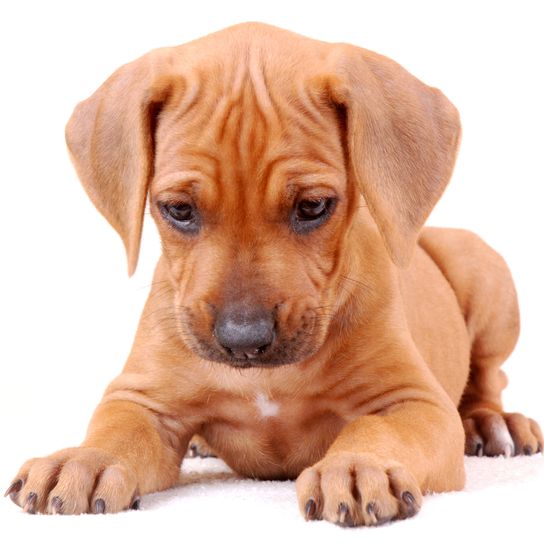
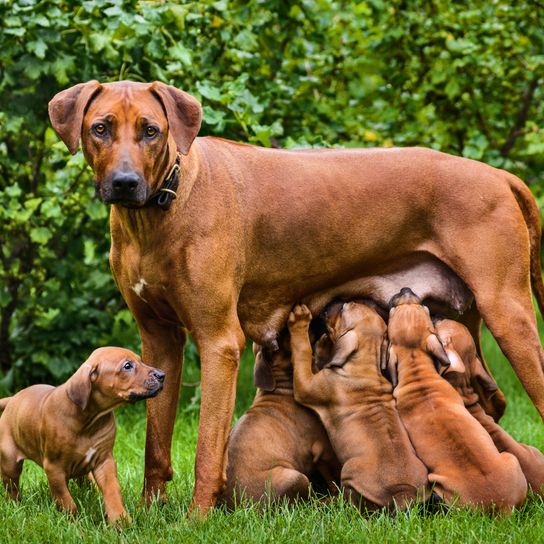
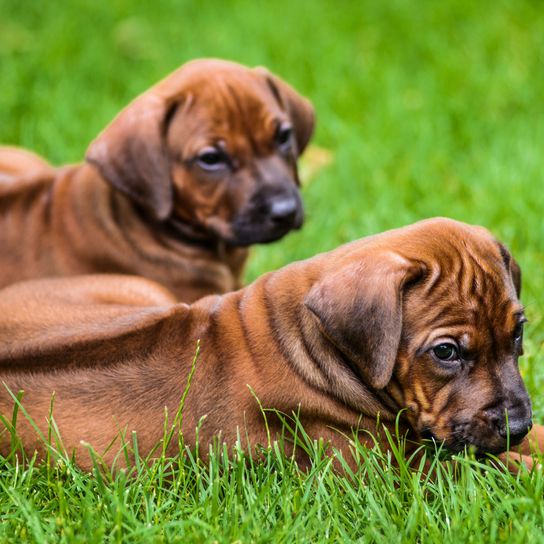
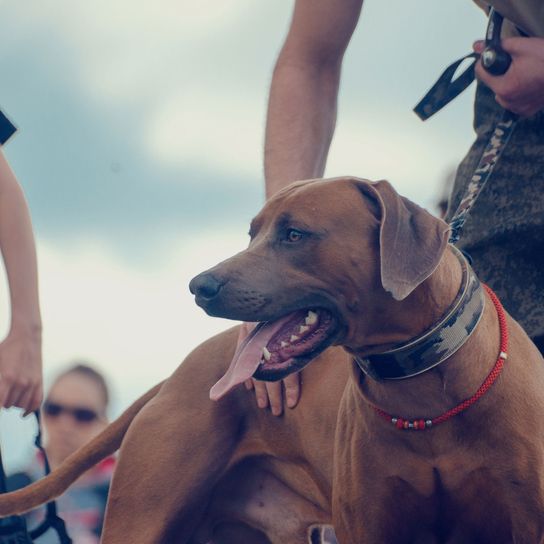
| Alternate Name | - |
| Origin | South Africa |
| Life expectancy | 10 - 12 years |
| Care requirements | low-maintenance |
| Activity level | average to high |
| FCI group | Related breeds |
| AKC group | Hound Group |
| KC group | Hound Group |
Rhodesian Ridgeback mixes
Attitude, character and temperament of the breed
Typical character traits of the Rhodesian Ridgeback
The Rhodesian Ridgeback is a courageous and intelligent animal. He wants to move, protect or do something. His temperament is persistent but not inexhaustible. He can form an intense bond with a single person. However, these dogs always keep their own head and may assert it - but with an equally stubborn owner, the Ridge will make a great companion.
They have a dignified demeanor and are reserved with strangers, but without showing signs of aggressiveness or shyness.
Exercise and movement
Due to its size and athleticism, the Rhodesian Ridgeback requires sufficient exercise. Jogging, cycling, hunting, tracking, agility or dog dancing are ideal as challenging activities.
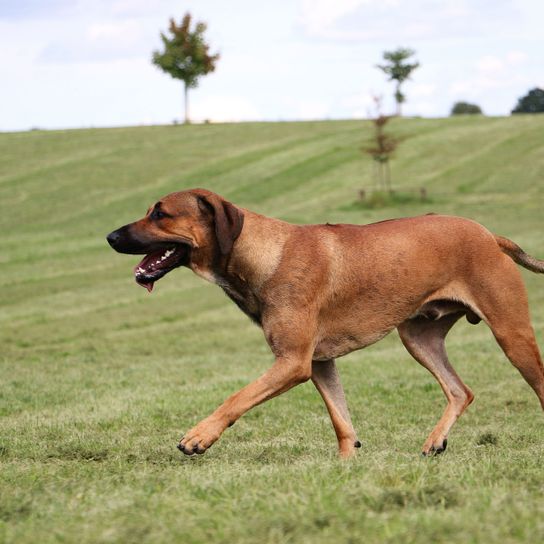
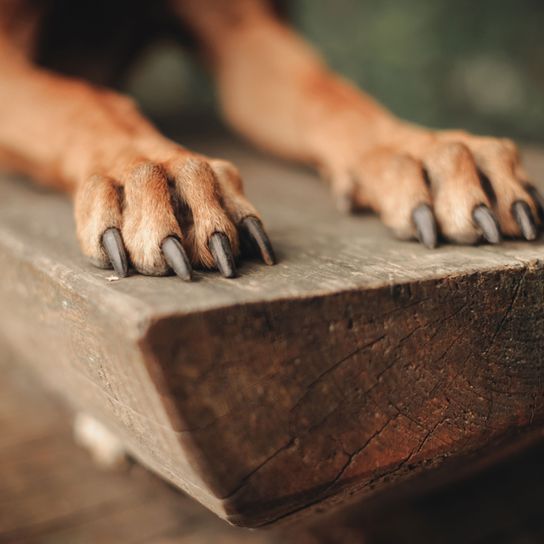
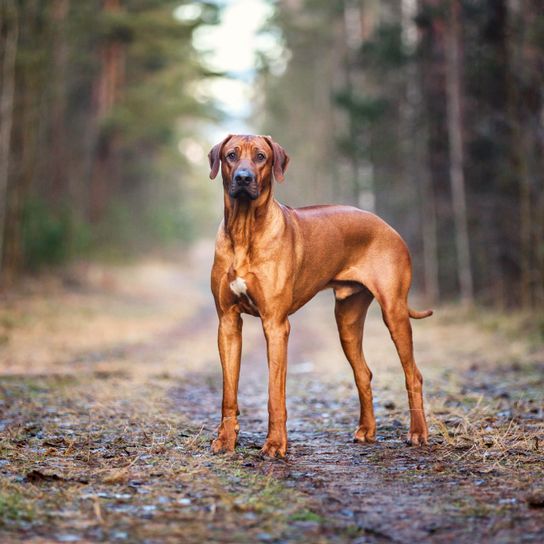
Breed specific diseases of the Rhodesian Ridgeback
Because of the Ridge, the Rhodesian Ridgeback is associated with dermoidsinus (DS) much more often than other breeds. Your dog may have several of these. If the vet diagnoses DS, surgery is best done within the 6th-8th week.
As a large breed of dog, he is equally susceptible to hypothyroidism, elbow and hip dysplasia, as well as the nerve disease Wobbler Syndrome.
Important information about the acquisition
The Rhodesian Ridgeback has a life expectancy of approximately 10-12 years.
Before you get a Rhodesian Ridgback puppy into your home, you must think carefully whether you can do justice to this agile dog. For example, in old age, like many other large breeds, they can deal with joint problems and arthritis. Therefore, his future home should not have stairs or there should be an elevator.
Buying or adopting a Rhodesian Ridgeback
Due to its peculiarity, these dogs are expensive: for a Ridgeback puppy you will have to pay at least 1200 Euro to 2000 Euro.
Good breeders will provide you with comprehensive information and advice on nutrition and husbandry, even beyond the purchase. You can get more information about Rhodesian Ridgeback breeding at the German Rhodesian Ridgeback Breeders Association.
But buying a Rhodesian Ridgeback does not have to be! Associations like Ridgeback in Not provide dogs that urgently need a new home for a small protection fee.

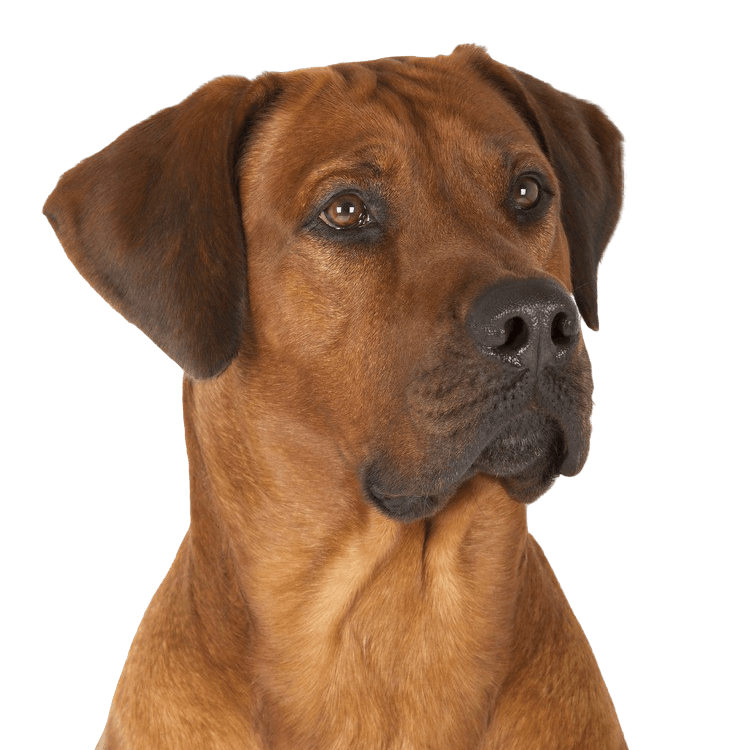
Breed characteristics of the Rhodesian Ridgeback.
This dog breed is classified by FCI in group 6 (Running dogs, sweat dogs and related breeds), section 3 (Related breeds). It does not require a working test.
The Ridgeback is among the large dogs, although his weight is moderate when measured against his shoulder height. The adult male dog grows between 63-69cm in height and weighs about 63.5kg, females are 61-66cm and weigh 32kg.
The head
The skull of the Rhodesian Ridgeback should be flat and broad between the appendages with a well marked brow line. In a relaxed posture, there are no wrinkles on the head. The profile should not be in a straight line from the occiput to the tip of the nose, also no cheeks are desirable.
The muzzle, eyes & ears
The muzzle of the Rhodesian Ridgeback is long, deep and strong with tight flews resting against the jaws. The nose should be black or brown. If the former is true, the dog usually has dark eyes, and if the latter, amber eyes, which are set moderately wide apart and are round in shape. The ears are set on fairly high and are quite broad at the base, but taper to a rounded tip. They should be carried close to the head.
This breed has a strong jaw consisting of a scissor bite. This means that the upper incisors closely overlap the lower incisors and are set vertically in the jaw.
The trunk
The neck of this breed is quite long, strong and without loose throat skin. The back shows strength, as do the muscular, slightly arched loins.
The chest should not be too broad, but very deep and roomy; the lowest point of the sternum is at the level of the elbow point. Seen from the side, the forechest should be visible.
The tail
The tail of the Rhodesian Ridgeback is strong at the base and gradually thins toward the tip of the tail. It is carried slightly curved, but never curled.
The limbs
The forelegs should be completely straight and composed of strong barrel bones. When viewed from the side, the foreleg should be wider than when viewed from the front. The Rhodesian Ridgeback has strong front tarsal joints, and the forefoot itself is set at a slight angle.
The shoulders should be clearly defined by their sloping position and should have a certain amount of muscle to allow great speed. The muscling of the hindquarters, on the other hand, should be lean, the knees well angulated and the hind pastern short.
Both the front and hind feet are rounded with tightly knit, well arched toes.
The coat
The hair of this dog breed should be short and dense, smooth and glossy in appearance, but neither woolly nor silky. The Rhodesian Ridgeback is light wheat to red wheat in color. A little white on the chest and toes is permitted, but extensive white coat in this area or on the belly or above the toes is undesirable. A dark muzzle and dark hangings are permitted.
| Fur length | short |
| Fur | - |
| Ear shape | Triangle |
| Tail | lang |
| Anatomy | muscular, strong |
| Size ♀ | 61 - 66 cm |
| Weight ♀ | 29 - 34 kg |
| Size ♂ | 63 - 69 cm |
| Weight ♂ | 36 - 41 kg |
| Suitable For | - |
Colors



Known Diseases
Hip dysplasia (HD)
Hip dysplasia (HD) is a genetic condition in dogs where the hip joint is not shaped properly. This leads to pain, stiffness and restricted movement.
Elbow dysplasia (ED)
Elbow joint dysplasia is a chronic disease complex of the elbow joint of fast growing dog breeds.
Ataxia
Ataxia (from Greek ἀταξία ataxia 'disorder' 'irregularity') is a generic term in medicine for various disorders of movement coordination. Ataxia can occur even when there is no paralysis (paresis), that is, when there is normal muscle strength.
FAQ
-
He can basically be kept as a family dog, but does not need children in his life absolutely. This must be tested and practiced through training and tolerance training.
-
The Ridgeback is considered a listed dog in Switzerland but not in Austria (exception: Vorarlberg) and Germany.
-
It's best to read our breed description carefully and consider if your lifestyle fits this animal.
-
The South African Ridgeback is not considered a dangerous breed. However, due to its bite strength, it is on the list of dangerous dog breeds in Switzerland in some cantons and also in Vorarlberg, Austria.
-
The Rhodesian Ridgeback has a "ridge" on the back. This is a line that always runs against the direction of the coat.
-
The Rhodesian Ridgeback is a brave and intelligent animal. He wants to move, protect or do something. His temperament is persistent but not inexhaustible. He can form an intense bond with a single person. However, these dogs always keep their own head and may assert it - but with an equally stubborn owner, the Ridge will make a great companion.
-
Medically, ridge is a very mild form of neural tube malformation, also called spina bifida. The mutation that triggers this may pose a risk for dermoidsinus.







